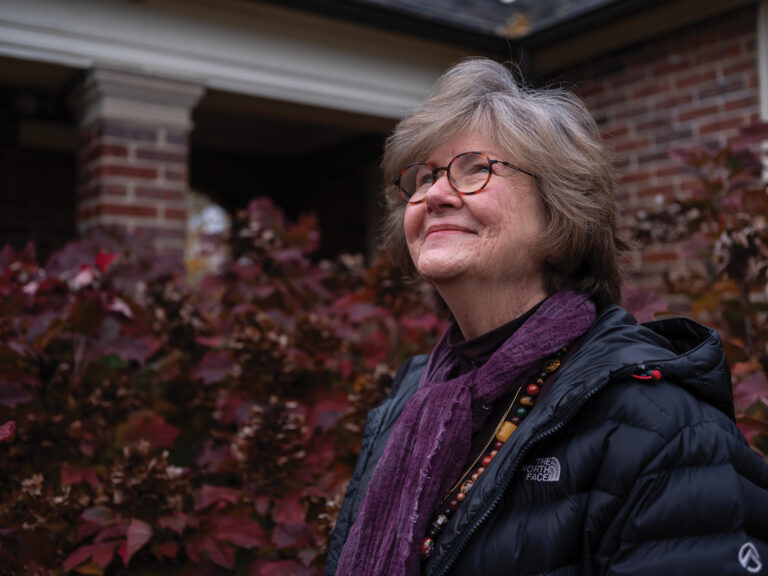Pam cared for her husband, who recently passed away at age 80 from Parkinson’s disease. He was diagnosed about two years ago, after having symptoms for several years. At first, he was largely able to do things for himself, but a few months after his diagnosis, he was hospitalized for blood clots in his lungs. Before her husband’s decline, friends would visit or help with physical tasks, like getting her husband in and out of the car. However, Pam says nobody offered to sit with her husband, which was the respite she needed.
Pam works part time as an insurance agent, specializing in Medicare plans. While visiting health centers for her Medicare work, she came across a free program for people with Parkinson’s disease. Her husband took some of the exercise classes until he was hospitalized.
Pam calls his return home from the hospital in a walker, “the big change.”
She suddenly couldn’t go places for long periods of time without making care plans. It also became physically difficult for her to take her husband anywhere, including to medical appointments, where there was no assistance with transferring him between the car and the wheelchair. When he was in the hospital and rehab facilities, Pam used that time as a break from caregiving. Eventually, he was in a wheelchair permanently.
She says she was grateful that her husband’s Medicare plan fully covered his home health needs, physical therapy, occupational therapy, and medical equipment, such as a hospital bed. Still, caregiving was taking a toll on Pam.
“I was under a lot of stress at the end,” she says. She had gone to her doctor for stomach issues, but after her husband passed away, the issues resolved. Pam sometimes wonders if knowing his diagnosis may have changed how her formerly athletic husband saw himself or whether that knowledge contributed to his decline.
Utilizing Resources
Pam was connected to a social worker from Family Services of Lake County. “She would basically call up and ask me how things were going and what kinds of things
I needed. Then she would give me information about who to get in touch with,” Pam says.
The social worker also recommended that Pam get in-home help, which Pam says was not many hours, “but all of it counts.” She found a man who could come to their home to perform personal care tasks, such as giving her husband a shower. The home help worker connected Pam to the Parkinson’s Foundation.
“I will tell you that I was thankful every day for the help that I had because it was very important to my own sanity.”
Pam says she appreciated whatever help she could get. “I will tell you that I was thankful every day for the help that I had because it was very important to my own sanity. I wasn’t getting any help from nearby family.”
The care management nurse from her insurance company and the home health agency were also important sources of support and information. When her husband fell, which he did frequently, Pam says, “My best friends were the fire department.”
What Policymakers and Society Need to Know
People need more help in the home, Pam says. “The person who is ill doesn’t necessarily need to be in a full-time place, but the person who is taking care of them does need resources and assistance. If I didn’t have the shower person and home health? That was a very important part of my regimen,” Pam says. “We need more care in the home.”
That in-home care is key because people do not want to leave their homes, Pam says. “Aging in place is the best thing for most people,” she adds. Based on her experience, Pam says caregivers should research resources, even if they won’t use all of them. “You don’t know what it is going to be like, so you need to explore all of the resources that are available to you or that are offered to you to see exactly what kind of benefit they are going to provide.”






